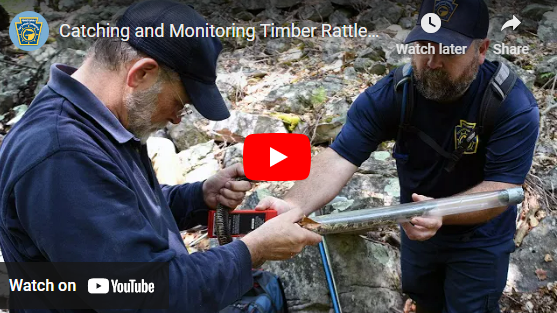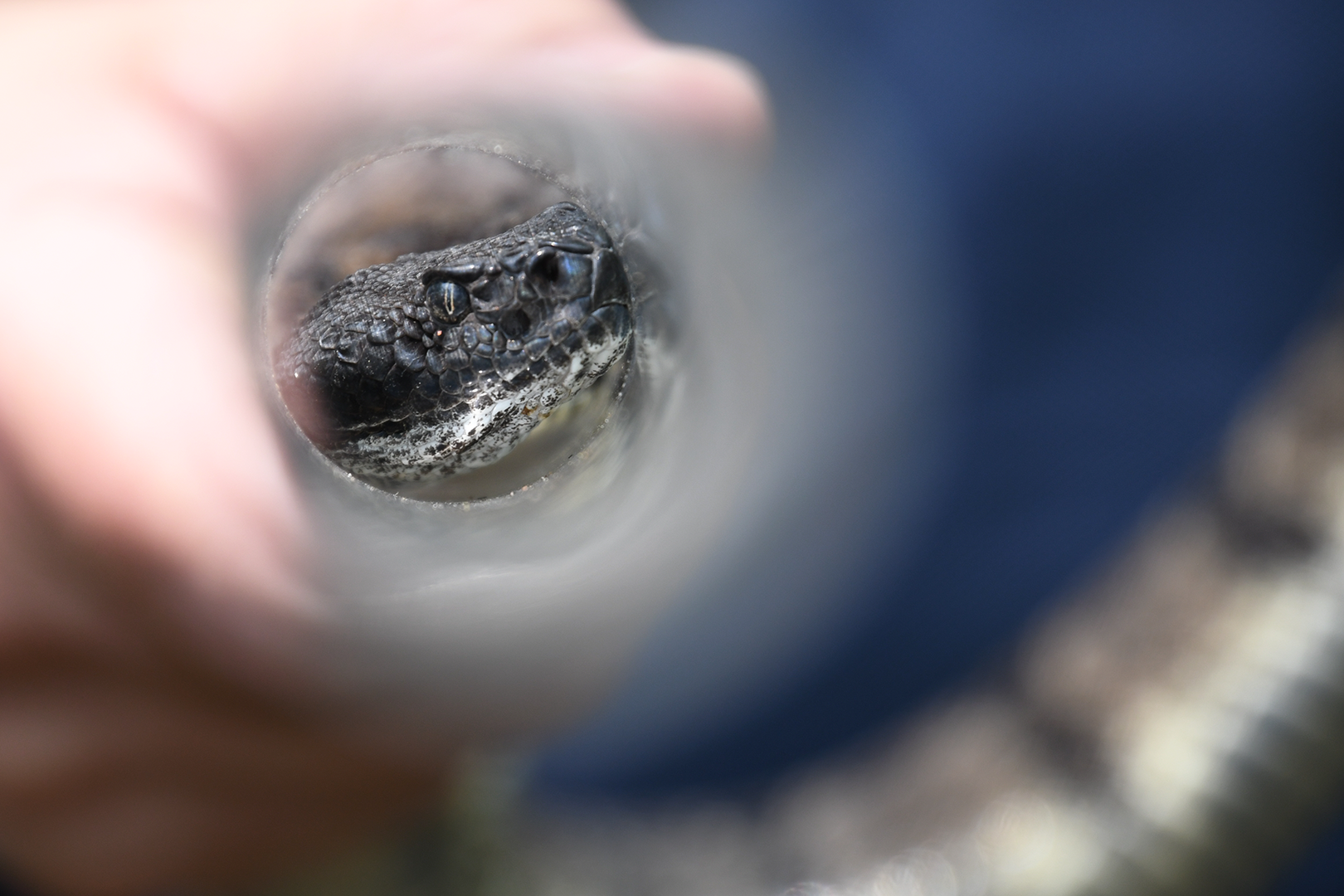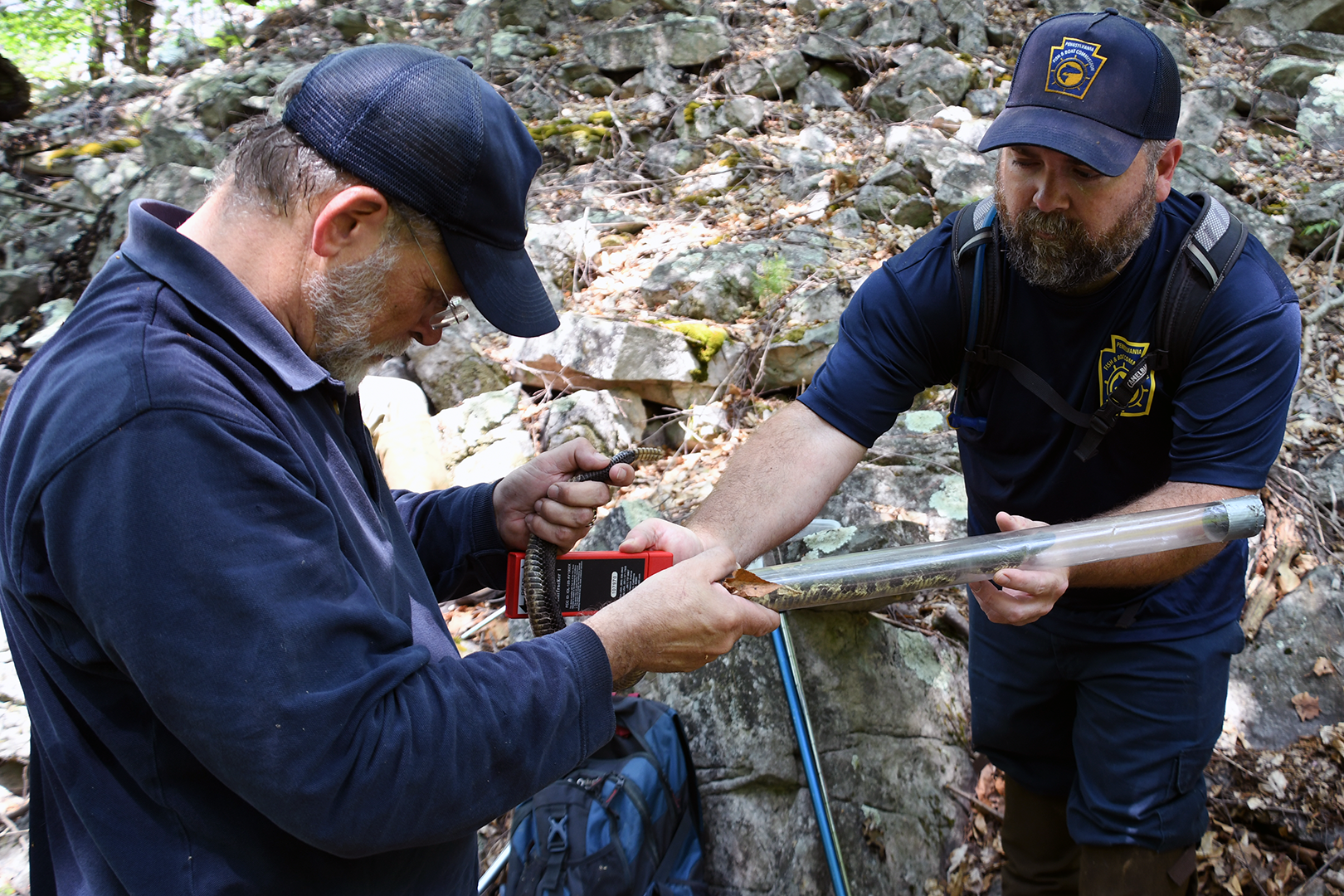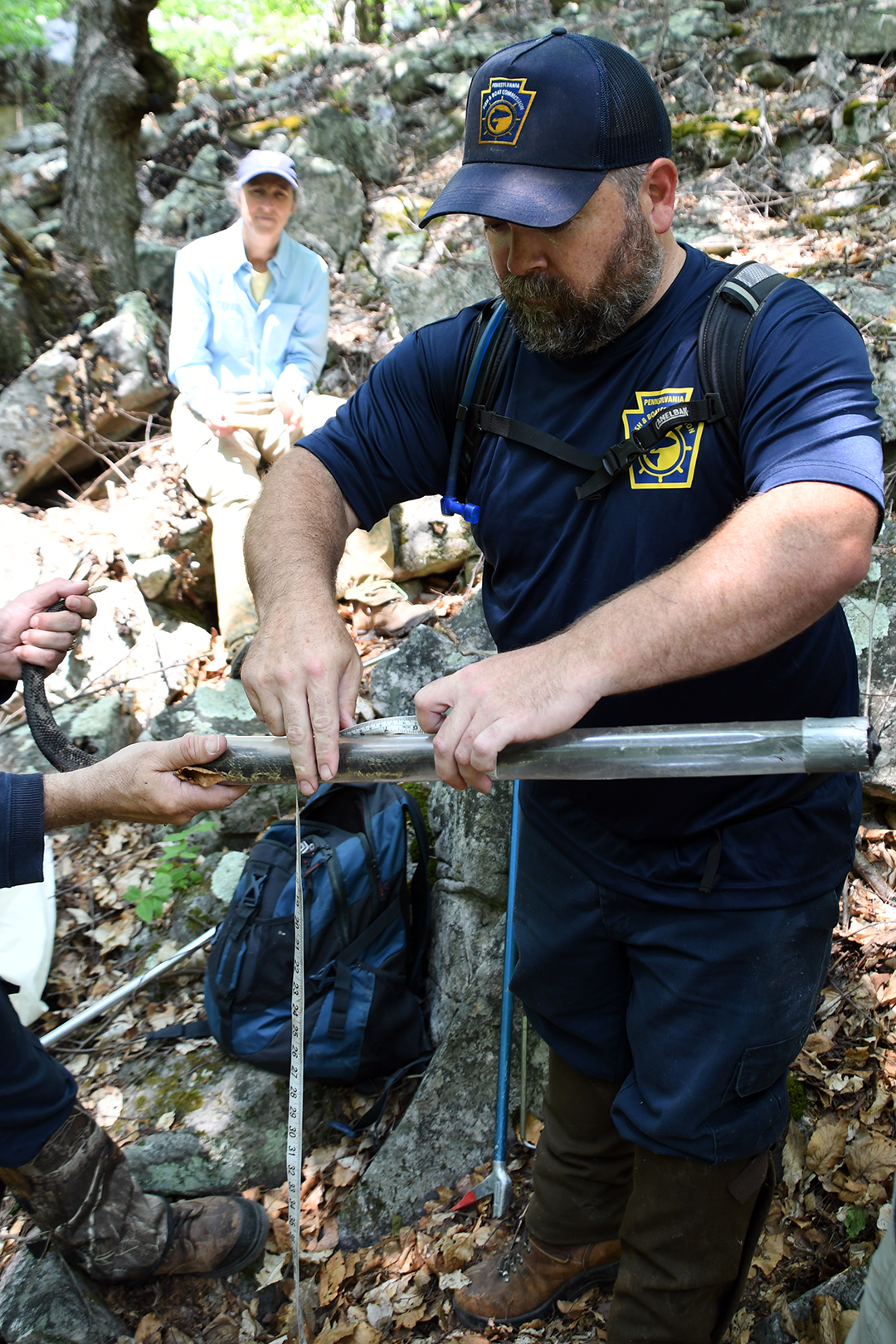TIMBER RATTLESNAKE MANAGEMENT

The buzz of a rattlesnake rattle is an unmistakable and often fear-provoking sound.
But not for Pennsylvania Fish and Boat Commission (PFBC) biologists.

“We get excited when we hear that,” said Chris Urban, chief of the PFBC’s Natural Diversity Section. “There are different theories on why rattles evolved. So large ungulates — deer, bison, elk — wouldn’t tramp on them. It’s also affiliated with a nasty bite. Animals that have experienced the bite hear that and they get freaked out. They’re going to move away.”
The warning doesn’t work on PFBC biologists who study Timber Rattlesnakes in Pennsylvania. They go toward the sound, searching for these snakes in places they’ve been found and tagged dating back to the 1990s and early 2000s.
They use technology and tricks to find snakes, but the best indicator they’re close is when one sounds off. The biologists, wearing protective guards on their shins, jump into action to grab snakes with snake hooks or tongs. Once they’ve caught one, they place it into a snake bag until they’re ready to process it, which requires coaxing the snake into a clear tube.
“That’s probably the riskiest part of all this, is getting him in the tube,” Urban said while holding a buzzing Timber Rattlesnake in Bald Eagle State Forest. “Beyond that, he’s good now. He can breathe, he’s comfortable. He’s a little annoyed because I’m holding him.”
Urban and his team perform a quick assessment of the captured snakes. They look for major injuries or snake fungal disease, measure the snake and count the subcaudal scales to identify its sex. If it’s a female, they also check to see if she is pregnant or recently had a litter.

Subcaudal scales are large, flat scales located on the underside of a Timber Rattlesnake between the vent (anal scale) and the base of the tail rattle. If a snake has 21 or more subcaudal scales, it’s a male. Females have shorter, stubbier tails with fewer subcaudal scales.
“One of the first things we do is see if he already has a tag in him,” Urban said, scanning a captured snake with a Passive Integrated Transponder (PIT) tag reader. “He’s never been tagged or caught by us, so we’re going to prepare a PIT tag.”
PIT tags are 12-millimeter transponders that use barcode technology.
“It gets implanted in the snake. It’ll stay in for the rest of the life of the animal,” Urban said. “That’s that snake’s unique identifier for the rest of its life. It’ll attach itself to the wall of the snake and heal up pretty quick. They’re a great tool.”
Once the assessment is finished and the snake is tagged, the biologists return it to where they found it. Then they’re on the hunt to find more snakes until they’ve cleared the monitoring site. Not all snakes are captured, but it’s common for biologists to find, catch and assess more than 20 snakes at one site during a spring survey.

As the agency with jurisdiction over reptiles and amphibians in Pennsylvania, the
PFBC sets regulations to manage native species. Timber Rattlesnakes have a short hunting season that runs from June 10 to July 31 each year. Hunters need a fishing license and venomous snake permit and are allowed to keep one snake per year, given it’s at least 42 inches in length and has 21 or more subcaudal scales.
The Timber Rattlesnake is one of three venomous
snakes native to Pennsylvania, along with the Eastern Copperhead and Eastern Massasauga. All three are considered Species of Greatest Conservation Need, a designation assigned to vulnerable animals the Commonwealth has a responsibility to protect.
Timber Rattlesnakes “were a candidate to potentially be listed as threatened or endangered for a long time,” Urban said. “We did an analysis and found that their numbers are pretty good, so we took them off our candidate list.
“It’s probably our most managed non-game species we have. Timber Rattlesnakes are part of Pennsylvania’s natural heritage, so we’re trying to keep them here. We’re trying to monitor them through management to keep them here long-term, well beyond our lifetimes. That’s the goal: keep them part of Pennsylvania’s natural heritage.”
Your fishing license dollars at work: Funds from fishing license sales help the Pennsylvania Fish and Boat Commission protect and improve water quality and protect and manage reptiles, amphibians and other aquatic life like mussels. The agency works to ensure aquatic resources remain protected and water quality supports aquatic life; tracks endangered, threatened and rare animals under the PFBC’s jurisdiction; and manages species restoration efforts and habitat protections and improvement.